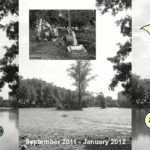Monthly Archives: June 2016
Not all chlorhexidine containing antiseptics kill multidrug resistant Klebsiella pneumoniae
The best way to treat an infection is to prevent it in the first place. As resistance to antibiotics becomes increasingly prevalent, the reliance on disinfectants and antiseptics to prevent the spread of bacteria becomes ever more
African American, Latino, and older patients in a Comprehensive Cancer Center
Time trends in hospital stay after hip fracture in Canada, 2004-2012
Canadian health authorities aimed to shorten hip fracture hospital stay through changes in bed management protocols and surgery access policy. Some provinces introduced the practice of repatriating hip fracture patients to long term care within 5 days
Genetic disorders in primary aldosteronism – familial and somatic: an explanatory attempt
Aldosterone is the steroid hormone secreted from the adrenal gland in response to sodium deficiency, blood volume loss or potassium loading. It acts on the kidney and the colon to retain sodium and excrete potassium, in a
Bovine milk microbiological quality and milking practices from pastures in São Miguel Island (Azores)
Could a salamander forage inside your refrigerator?
Looking ahead: What are the lessons for education in Microbiology and beyond?
Higher Education has seen many changes, always faces new challenges, and educational approaches have to adapt in response and proactively. Issues such antibiotic resistance and food security emphasise the need to prepare for future skills demands of
Borrelia spirochetes found in a patient with Flegel disease
Novel approaches to cancer treatment encoded within non-coding RNA
A hallmark of all living organisms is the presence of genetic material within each cell; this material is invariantly composed of a specific class of biological molecules known as the nucleic acids. While the more familiar variety
Automated chest X-ray screening: can edge map measure the evidence of pulmonary abnormalities?
A New therapy for healing nonunion fractures in patients using self-bone marrow derived mesenchymal
Sub-Antarctic Fish – how do they do when things get warm?
Mapping brain shrinkage in dementia
Action plans for pediatric eczema: Are they effective?
Visible-light-induced preparation of Functionalized Indoles
Fish waste – a resource
The amount of farmed Atlantic salmon in Norway was 1.27 106 tons in 2014. This results in 0.34 106 tons of waste (residual raw material). In addition, even more waste is produced from pelagic catch, which is



















